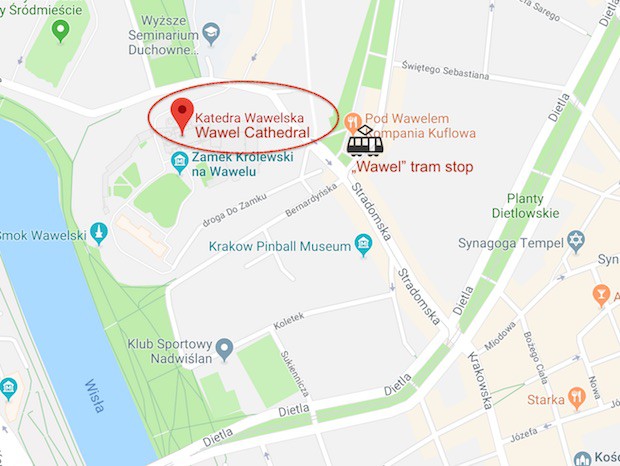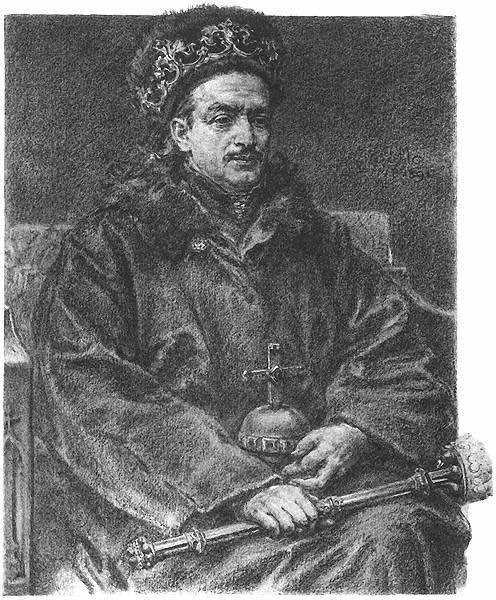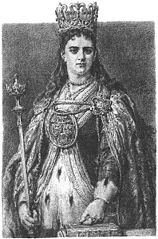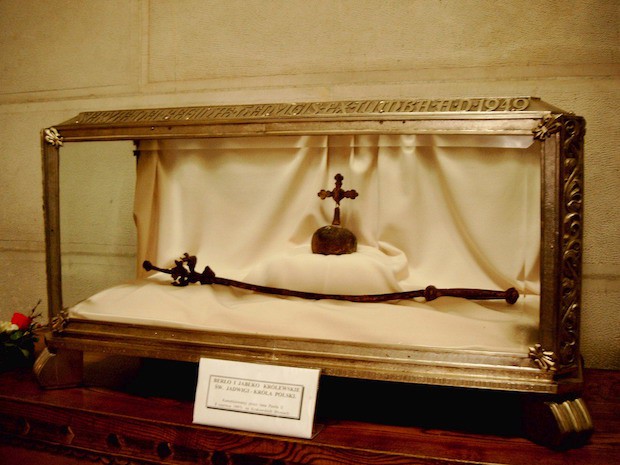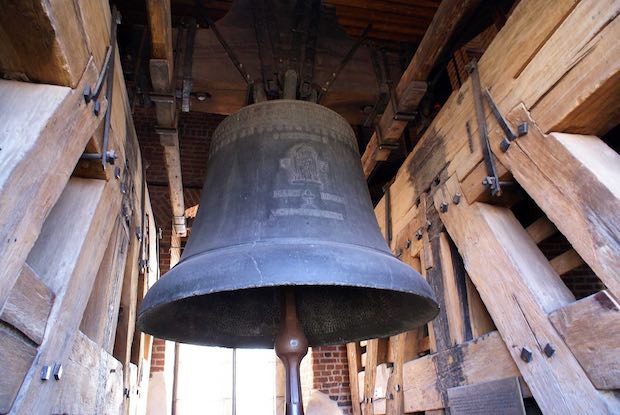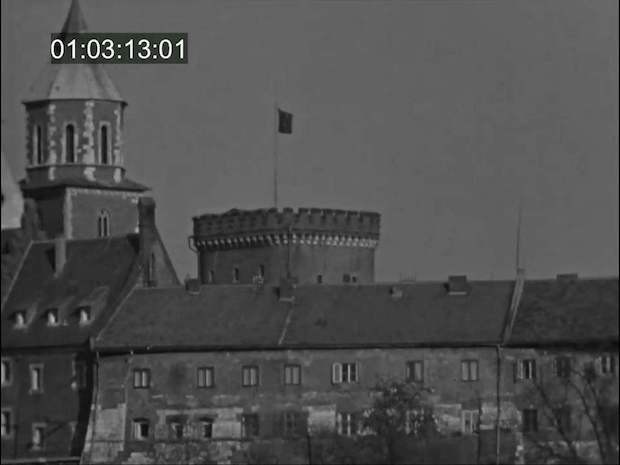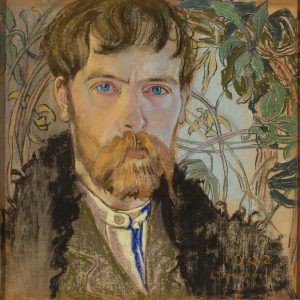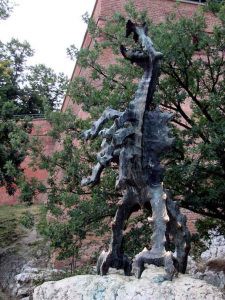Wawel Cathedral – 4 Secrets Hidden Inside to Discover
Get ready to learn about the mysteries of this majestic building!
The Wawel Cathedral, called Katedra Wawelska in Polish, is one of the most essential national sanctuaries in Poland that served as the coronation site of Polish monarchs throughout the years.
Housing numerous art treasures, the history of the Wawel Cathedral spans over a thousand years making it one of the most exciting spots in the entire country and the city of Krakow. Visitors are fascinated by the Wawel Cathedral because of its 14th-century architecture and the marvelous collection of arts ranging from Gothic, Renaissance and Baroque to Classicist and even Modern.
But the Cathedral is much more than just a treasure trove for art enthusiasts. In fact, many of its artifacts reveal mysterious histories that date back to the complicated history of Polish kings and queens.
This post unveils 4 secrets hidden inside the Wawel Cathedral to help you fully appreciate the mysterious nature of this breathtaking national sanctuary.
So let’s jump right in, shall we?
Wawel Cathedral – useful tips
Let’s start with some practical knowledge about sightseeing the Wawel Cathedral:
Wawel Cathedral – opening hours
| Monday - Saturday | Sunday | |
| Cathedral | 9:00 - 17:00 | 12:30 - 17:00 |
| Cathedral Museum | 9:00 - 17:00 | Closed |
| Ticket office | 9:00 - 16:30 | 12:30 - 16:30 |
| Monday - Saturday | Sunday | |
| Cathedral | 9:00 - 16:00 | 12:30 - 16:00 |
| Cathedral Museum | 9:00 - 16:00 | Closed |
| Ticket office | 9:00 - 15:30 | 12:30 - 15:30 |
Wawel Cathedral – Entrance fee
- The entrance to the Cathedral itself is free of charge but if you want to see the Sigismund Bell, Royal Tombs and Cathedral Museum you are ought to purchase the ticket (the adult ticket costs 12 PLN but children, school youth, students, teachers, senior citizens and pensioners, whether from Poland or abroad, are entitled to CONCESSION TICKETS upon presenting the relevant document).
- The awesome way of sightseeing is an audio-guided tour. The tour around Wawel Cathedral and up the Sigismund Bell tower takes around 30 minutes, the Royal Tombs 10 minutes, and the Cathedral Museum around 20 minutes. You will learn everything we were talking about before :)
- Renting the audio guide costs 7 PLN.
Wawel Cathedral – how to get there?
You can reach Wawel Cathedral by public transportation (the closest tram stop is WAWEL). Check out the map below to where exactly the Cathedral is located:
Wawel Cathedral – Tickets
Ticket can be purchased either at the Wawel Castle Ticket Office or exclusively at the Discover Cracow website.
And if you want to learn more about Wawel Castle, we have a beautiful and interesting blog post ready for you.
Wawel Cathedral – 4 secrets hidden inside
The Jagiellonian Curse
We all remember what happened when Howard Carter opened the tomb of King Tutankhamun in the 1920s. People who were with him started to become ill, and many of them died, according to the popular opinion due to the curse of the pharaohs.
Believe it or not, but a similar story happened in the early 1970s in Krakow when a group of researchers opened the tomb of King Casimir IV Jagiellon.
The examination begins
Now, listen to this:
During the 1970s, Poland was a profoundly socialist country that didn’t allow many types of research to be conducted. In general, receiving an agreement for examining historical sites was very challenging, so when archaeologists were finally granted permission for study, they would advertise it all over the place.
Interestingly, it was the man who would later become Pope John Paul II – then serving as the Archbishop of Krakow – who acted as the leading supporter of researchers who wanted to study King Casimir. In fact, Karol Wojtyla was responsible for the final decision to allow opening the tomb of the King.
Mysterious deaths
So it finally happened.
Half a millennium after the king was buried, archaeologists could finally examine his remains and discover all the secrets he took to the grave. Naturally, the researchers also hoped that the burial site wasn’t looted by Russians during the Second World War – that’s what happened to many royal tombs in Poland.
The archaeological works at the Wawel Cathedral were at the time a hot topic in the Polish media, and everyone became obsessed with the medieval king. At the same time, researchers who were part of the project began to joke about a potential curse that could take their lives during the examination.
Unfortunately, their words were prophetic…
The tomb of King Casmir / source: www.katedra-wawelska.pl
When the archaeologists opened the tomb on April 13, 1973, they saw a rotten wood coffin bearing the remains of the king. Unfortunately, during the examination process, a few researchers died – some of them during due to infections and from strokes. After only several days of research, four researchers died!
What was the cause?!
But wait... it gets worse:
During the next few years, many others suffered from cancer and other diseases. In total, 15 people died as a result of exposure to King Casimir’s remains in the tomb or the laboratory. The deaths became a media sensation.
After years of speculation, researchers discovered the reason behind the death of all of these people. And it turns out that it had more in common with the Egyptian tombs than we expected. The killer was Aspergillus flavus, a fungus toxic to mammals that causes infections and can be dangerous to those with a compromised immune system. It probably appeared in the tomb during the medieval times, and when the grave was opened, it was a biological bomb that exploded 500 years after the burial of King Casimir.
source: www.gazetakrakowska.pl
Eventually, the remains of King Casimir were reburied in the original tomb. And although the mystery of the curse is solved, you can still hear many people repeating the story about the king who simply didn’t want to be disturbed. Perhaps one fungus can’t be enough to cause so much damage after all?
The wooden crown of Queen Jadwiga
On July 17, 1399, Krakow witnessed one of the saddest events in its history. The death of the famous Queen Jadwiga following childbirth was a tragic event that profoundly affected the history of Poland.
However, throughout the centuries the location of her burial was not visible or well-known to the public. The local authorities were planning to move her remains to a more visible location and prepared a unique sarcophagusfor her sculpted by a famous sculptor in 1902.
Finally, Prince Cardinal Adam Sapieha decided to make up for all the years of neglect and respectfully examine and move the remains of Queen Jadwiga to a new location nearby the Sigismund Chapel.
The most popular choices
The opening of the tomb
The opening of the tomb was scheduled for July 11, 1949.
At 9 o’clock, the entire commission was present for opening the tomb. Together with the Prince Cardinal there where professors from the local university, authority representatives, as well as local literary figures. As the workers began to reveal the tomb, it turned out that looters must have attempted that in search of treasures as the tomb was damaged. At 11:25, the workers found and revealed the coffin.
As they removed the upper layer of wood from the coffin, they saw the orb and cross (the globus cruciger, a Christian symbol of authority used by royals in Poland) and a shape of a figure covered in a dark cloth. The entire coffin was moved to the treasury of the Cathedral, and the remains began to be studied.
The Cathedral was closed for the occasion, and outside of its gates, there were crowds of people looking for news about the proceeding works as workers removed rubble from the Wawel Cathedral.
Polish beloved Queen
You might be wondering:
Why were people so interested in the remains of Queen Jadwiga?
It may come as a surprise, but Queen Jadwiga was surrounded by cult due to her sacrifice for the country, her modesty, and political wisdom.
It turned out that the body of Queen Jadwiga has not been moved since the day of her burial. But as researchers removed various royal objects from the body, they still couldn’t find the crown.
According to the legend, Queen Jadwiga gave up all her Crown Jewels and her valuables to restore Krakow’s Academy. Her husband buried her like a queen by adding a wooden imitation of the crown to her burial costume. Several days later, the Queen was reburied to the beautiful sarcophagus you can still admire today.
Sigismund Bell
Another exciting attraction in the Wawel Cathedral is the Royal Sigismund Bell, the largest of the five bells that hang in the Sigismund Tower. The bell was cast in 1520 and named after the King who commissioned it.
Now get this:
The bell weighs a total of 13 tons and requires 12 experienced bell-ringers to swing it!
What does the bell symbolize?
The bell tolls on special occasions and is regarded as one of Poland’s national symbols. It’s a great idea to visit the bell because its body is decorated with various inscriptions and images.
For example, if you look at the upper part of the bell, you will see a Renaissance Latin inscription that indicates the bell’s donor and its dedication to God:
Deo Opt Max ac Virgini Deiparae sanctisque patronis suis divus Sigismundus Poloniae Rex
campanam hanc dignam animi operumque ac gestorum suorum magnitudine fieri fecit anno salutis
MDXX('To the greatest and best God, and to the Virgin Mother of God, the illustrious King Sigismund of Poland had this bell cast to be worthy of the greatness of his mind and deeds in the year of salvation 1520.')
On the opposite side of the bell, you will find a corresponding an image of St. Stanislaus represented as the Bishop of Krakow. Stanislaus is the patron saint of the Wawel Cathedral and, by extension, of the city of Krakow.
You can also spot the symbols of the two nations that were united under the reign of King Sigismund I – the White Eagle that symbolizes the Kingdom of Poland located on the left, and the Knight of the Grand Duchy of Lithuania on the right.
The making of the bell - quite an interesting story itself!
It was cast by Hans Behem from Nuremberg in 1520. He set up a particular foundry nearby the beautiful Florian Gate where he claimed to be using scrap metal taken from cannons captured by the Polish-Lithuanian forces from the Muscovite army in a battle. Another legend tells that the source of the metal was, in fact, the Battle of Obertyn.
The bell was finally installed in the tower and rang for the first time in 1521. From then on, it rang during religious and national holidays, but also significant moments in the history of the country.
For example, the bell rang during the German invasion of Poland on September 1, 1939. It also rang on the eve of Poland’s entry to the European Union on April 30, 2004. You could you could hear the bell toll during the funerals of significant figures in the Polish history and culture such as such as Adam Mickiewicz (1900), General Władysław Sikorski (1993), or Pope John Paul II (2005).
Polish Occupier celebrating their victories
Interestingly, the bell has been used by forces occupying Poland to mark important events as well.
A Nazi flag on Wawel Castle, 1939 / a still from a short video of Wawel during WW II (to watch he video click here)
For example, Hans Frank, the governor-general of Nazi-occupied Poland ordered the Sigismund Bell to ring in 1940 to celebrate the German victory over France. Following the death of the Soviet dictator Joseph Stalin in 1953, the governing communist authorities demanded to ring the bell as a sign of mourning. However, the Cathedral’s bellringers refused to do that and soldiers were ordered to ring the bell instead. Other sources claim that the bell was rung by a group of Communist activists.
Pranks and breakage
Needless to say, some people have over the years attempted to ring the bell as a prank.
For instance, in 1882 a group of Polish high school pupils who would later become integral to the Polish intelligentsia-sneaked into the tower and managed to ring the bell somehow. Among them was Stanisław Wyspiański, a famous poet, playwright and painter who – quite ironically! – had the bell ring at his funeral in 1907.
During all these years, the bell made about 12 million strokes. In fact, during the 19th century, it broke and underwent repairs three times. Recently, it broke again in 2000, but it was replaced by a brand-new bell created by a local metallurgic company of Krakow and installed in April 2001.
All these stories demonstrate that the bell was and still is an integral element in the Polish history every visitor should know.
Bones of the Wawel Dragon
It goes without saying that the Wawel Cathedral is an important place in the history of Poland because it holds the remains of a number of royals and most famous people. However, one of the things that attract people to the Cathedral is the hanging bundle of bones that are rumored to belong to a local dragon.
Is it real?
You can spot them right at the Cathedral’s entrance. They are said to be the real bones of the Wawel Dragon who terrorized the early inhabitants of Krakow. According to the legend, the Dragon forced the local people to put out a fresh young maiden each month to quench his appetite. Finally, he was killed by a local hero who fed him a lamb that was filled with sulfur. That meal made the Dragon so thirsty that he drank so much water from the Vistula River that he exploded.
The bones of the Dragon hanging at the entrance to the Cathedral are considered fossilized whale or mammoth bones. But their real origin doesn’t really matter because they have been here for centuries and are actually credited with magical powers!
Do you know any other interesting stories about the Cathedral? Or maybe you would like to learn something more about one of these legends?
Leave us a comment below and share your experience at the Wawel Cathedral. We’re always looking for new tips and ways we could help our community learn more about the treasures hidden in the city of Krakow!


